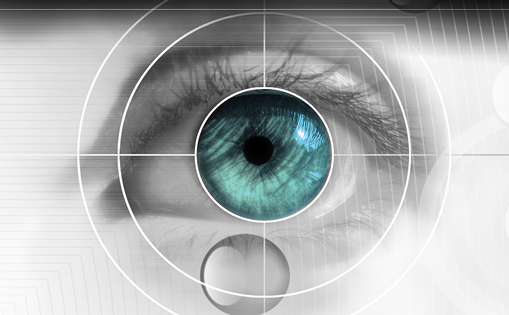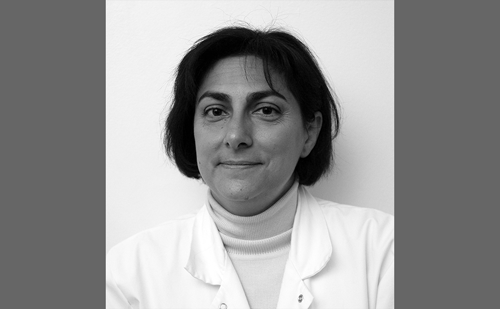Corneal ectasia is a rare but serious post-operative complication that usually occurs after uneventful excimer laser surgery, i.e photorefractive keratectomy (PRK) or laser in situ keratomileusis (LASIK). It manifests as a progressive thinning of the cornea and steepening, usually inferiorly, with loss of uncorrected and often also best spectacle-corrected visual acuity (BSCVA),1 which requires aggressive management for visual rehabilitation. The first cases were described by Seiler et al. in 1998.2,3 This study caused refractive surgeons to examine their patient-screening techniques and began the process of researching potential risk factors for ectasia development and the underlying corneal biomechanical mechanisms by which this complication may occur. This article will discuss the epidemiology of post-operative corneal ectasia, biomechanical mechanisms that may predispose the cornea to abnormal weakening after excimer laser surgery, particularly LASIK, risk factors and screening techniques, and ectasia management.
Post-operative Ectasia Epidemiology
The incidence of post-operative ectasia has been estimated to range from 0.041 to 0.6%.4 However, a 2004 survey of the members of the International Society of Refractive Surgery (ISRS) and the American Academy of Ophthalmology (AA) found that more than 50% of the surgeons had at least one case of ectasia in their practice,5 thus the actual incidence of post-operative ectasia remains unknown. Furthermore, the timeline over which post-operative ectasia develops is quite variable. The reported average onset is 15.3 post-operative months,6 with 25% of patients presenting within three months and more than 50% presenting within 12 months, the earliest case being detected at one week and the latest case at 62 months. In a recent study,6 the vast majority (95.9%) of post-operative ectasia cases developed after LASIK. This suggests that the higher risk of developing ectasia after LASIK compared with PRK may be related to some corneal biomechanical differences between the two procedures.
Corneal Biomechanics Related to Corneal Ecstasia
Corneal refractive surgery alters the shape, thickness, and tensile strength of the cornea. The distribution of keratocytes is not uniform throughout the corneal stroma, with greater keratocyte density in the anterior 10% of the stroma and lower density in the posterior 40% of the stroma.7,8 Furthermore, corneal tensile strength is not uniform: it is greatest in the anterior two-thirds of the corneal stroma9 and significantly weaker in the posterior one-third of the stroma, and the anterior corneal lamella (corneal flap) minimally contributes to corneal tensile strength after LASIK.10 Thus, it is not surprising that alterations of corneal biomechanical properties after PRK or LASIK are different: PRK decreases keratocyte density in the most anterior corneal stroma, whereas LASIK results in both a decrease in the already weaker posterior corneal stroma and a decoupling and functional weakening of the anterior stroma. Therefore, it appears logical that more potential biomechanical alterations arise after performing LASIK, especially in thin corneas or in patients with evidence of corneal weakness, such as corneal shape and steepness alterations evident during topography.
Risk Factors
Recently, we reported that the most important risk factors predicting the development of ectasia after LASIK, in order of importance, are: abnormal pre-operative topographies, low residual stromal bed (RSB), under 30 years of age, low pre-operative corneal thickness, and highly myopic preoperative manifest refractions.6
Abnormal Pre-operative Topographies
Pre-operative topographies should be obtained and carefully interpreted for every refractive surgery candidate. Even though not all screening criteria are agreed upon, several studies have defined different topographical findings that indicate increased risk for develop ectasia after LASIK, including forme fruste keratoconus (FFKC) as defined by Rabinowitz and pellucid marginal corneal degeneration patterns (see Figure 1).
Making pre-operative screening more difficult is the fact that up to onethird of refractive surgical patients have asymmetric bowtie topographical patterns.11,12 Members of the AAO/ISRS/American Society of Cataract and Refractive Surgery (ASCRS) joint committee recommend avoiding LASIK in patients with asymmetric inferior steepening or asymmetric bowtie patterns with skewed steep radial axes above and below the horizontal meridian.13 Eventually, patients with unilateral topographical features of keratoconus do so by simply decreasing the RSB each time the procedure is performed, or if the multiple enhancements are simply a consequence of the progressive myopic shift due to post-LASIK ectasia. In candidates for enhancement, measurements taken months after the previous LASIK usually overestimate the corneal thickness due to compensatory epithelial hyperplasia,30,31 and this overestimation can lead to a false sense of security about RSB thickness prior to enhancement, resulting in a thinner than ideal RSB after enhancement. The importance of directly measuring intraoperative flap and RSB thicknesses in these situations is crucial to avoid excessive ablation of the posterior stroma, and has been highlighted by previous studies31,32 that demonstrate significant inconsistencies between RSB estimation by various direct and indirect measurements in patients undergoing repeated LASIK procedures. This can be prevented by intraoperatively measuring the corneal thickness or by utilizing confocal microscopy33 or high-speed optical coherence tomography (OCT)33,34 prior to re-treatment, as these instruments can accurately measure residual stromal bed thickness without ever lifting the flap.
Other Potential Risk Factors
In addition to the main risk factors that have been identified, other factors should be considered when assessing a candidate for LASIK, especially in borderline cases.6 Excessive rubbing of the eyes can induce or exacerbate keratoconus, and refractive instability should also lead to a more thorough investigation to detect early manifestations of a possible keratoconus, which would preclude the performance of LASIK in a potential candidate. A positive family history for keratoconus should also be considered. Although most reported cases of ectasia after LASIK had at least one of the aforementioned risk factors, there have been case reports of ectasia developing in patients without risk factors after LASIK35,36 and surface ablation.12,37,38 Therefore, ectasia can also occur after uncomplicated surgery, even though candidates are appropriately screened, and in itself does not imply that malpractice has occurred.
Quantitative Assessment of Risk in Laser In Situ Keratomileusis Candidates
Currently, there are a number of reported screening techniques available to assess pre-operative risk for ectasia development, including a number of studies aiming to establish specific topographical parameters to determine high-risk patients. Rao et al.,39 Tabbara et al.,40 and Sonmez et al.41 have all proposed unique detailed Orbscan II screening techniques to identify at-risk patients for ectasia, but further evaluation and comparison with other proposed screening methods is needed to test these models. We have proposed a quantitative Ectasia Risk Score System6 that takes into account pre-operative topography, residual stromal bed thickness, age, pre-operative corneal thickness, and the degree of myopia. When applied to ectasia cases and controls, the screening approach had a sensitivity of 91% and specificity of 96% when predicting ectasia after LASIK. This screening method was compared with both traditional screening parameters, i.e. FFK or RSB <250 microns and the Tabarra Orbscan interpretation method,40 and was found to be significantly better than both at predicting ectasia. Furthermore, this model has recently been validated utilizing novel ectasia and control populations with nearly identical results (92% sensitivity and 94% specificity).42 Therefore, based on the available data, it appears that consideration of a combination of predisposing factors in a weighted fashion for each patient produces the most accurate risk determination. The greatest emphasis should be placed in topographical pattern analysis, and even higher scrutiny is needed in younger patients, since it has been established that they are at increased risk for being missed as high-risk candidates.
Diagnosis of Post-operative Ectasia
Usually, the earliest manifestations of post-LASIK ectasia are increasing myopia and astigmatism, which may mimic regression. Early topographical changes include decreased corneal thickness, increased inferior steepening, and increasing irregular astigmatism. Increasing posterior float values may also indicate ectasia development, although they appear to be significantly less reliable. The topographical changes may range from subtle steepening to markedly decreased thickness and significant inferior steepening (see Figure 2). These early changes may be misinterpreted as regression, and it is imperative to rule out early ectasia prior to performing an enhancement, as this will invariably make the situation worse.
Post-operative Ectasia Management
The first step in ectasia management is the avoidance of complications. To this end, utilizing alternative refractive procedures in borderline patients, such as advanced surface ablation techniques, including PRK, laser subepithelial keratomileusis (LASEK), Epi-LASIK, or phakic intraocular lenses, may be more suitable for diagnosed borderline candidates, especially those with thinner corneas or mild topographical irregularities. When ectasia occurs, corneal transplantation is the most definitive treatment; however, there are several less invasive options that are usually effective and can postpone or obviate the need for transplantation, including rigid gas permeable (RGP) contact lenses, intracorneal ring segments, and collagen cross-linking. A recent review discovered that the vast majority of ectasia cases can be effectively managed without the need for corneal transplantation, and that most patients can be fitted with RGP lenses and succeed with this strategy indefinitely.43
RGP contact lenses are frequently useful for visual acuity improvement, due to having fitting techniques similar to those for keratoconus44,45 and customized for each case. Standard aspheric, multicurve, or reverse-geometry lenses, either alone or in combination, can be used, and an oxygen-transmissible soft lens in a piggyback system may be added to improve comfort. Intracorneal ring segments (Intacs, Addition Technology Inc., Sunnyvale, California), recently approved for use in keratoconus, have occasionally shown promising results when used off-label in cases of post-LASIK ectasia. Currently, there is no standardization on techniques used since some surgeons have used the same method as for low myopic correction to situate symmetrical thickness Intacs segments by placing the wound in the 180º meridian,46,47 while others have used both symmetrical and asymmetrical segments, i.e. placing a thicker segment inferiorly and standard wound placement.37 Alio et al.48 reported success when placing symmetrical thickness segments locating the wound in the steep corneal meridian. Alternatively, Pokroy et al.49 reported success by using inferiorly situated single Intacs segment implantation. However, there are currently few longitudinal follow-up data and long-term results are yet to be determined in order to standardize the technique.
In the continuous search to find more definitive treatments, corneal collagen cross-linking using riboflavin as a photosensitizer, followed by ultraviolet-A exposure, has been shown to improve the corneal stability for post-LASIK ectasia. Wollensak et al.50 found that collagen cross-linking halted the progression of ectasia in keratoconus patients and, in many cases, somewhat reversed the ectatic process, resulting in a decrease in corneal steepening and refractive error with a concomitant increase in BSCVA. Future studies should continue to evaluate the safety and efficacy of this approach and its applicability for post-LASIK patients.
Future Options for Ectasia Management and Reversal
Given the fact that there are cases of patients developing ectasia without having any identifiable risk factor prior to surgery, and that many of these patients are younger and may have developed topographical abnormalities even without surgery35,51 or may have developed bilateral corneal ectasia after unilateral LASIK,51 the need to improve the sensitivity in the screening for early manifestations of reduced corneal integrity has become evident.52 There are newer techniques that may improve identification of high-risk patients with apparently normal topographies with already reduced corneal biomechanical integrity, such as corneal interferometry,53 corneal hysteresis measurements,54 and dynamic corneal imaging.55 While promising, these techniques remain to be validated on a large scale.
Conclusions
Post-operative corneal ectasia is a rare but potentially devastating complication of excimer laser corneal refractive surgery. This side effect occurs much more frequently after LASIK, likely due to specific corneal biomechanical characteristics that render the cornea weaker after LASIK than after surface ablation. Many risk factors have been identified, and modern screening strategies should significantly reduce the number of ectasia cases that occur. When ectasia does occur, conservative methods of visual rehabilitation are often sufficient and penetrating keratoplasty is rarely required. Advances in patient screening and management are necessary to further reduce the incidence of this complication and improve treatment for patients in whom ectasia occurs.







